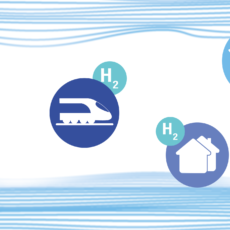

While the Government has “shutdown” over the funding of a wall between Mexico and the USA, the rest of the responsible community continues to go about their daily lives living through the terror of a southern invasion. If I’m believing our politicians and sections of the media. What would be the Life Cycle Energy to provide such a wall and could it be offset by the addition of solar panels along the length?
The length of the US-Mexico border is 1954.2 miles long. In a perfect world of Twitter promises, we would be able to construct a wall the entire length and not worry about the 1240 miles of the Rio Grande, 100 miles of mountains east of San Diego nor the density of housing (and relocation costs) along the California and Arizona stretch.
The Department of Homeland Security advises the wall needs to be between 18 & 30 feet high and as deep as 6 feet underground. Taking the literal sense of a “wall” lets look at a basic construction of digging the 6ft deep trench and constructing the 30ft (+6ft) concrete wall.
We will take the option to pre-cast our concrete for a cheaper, more controlled and better quality construction (not to mention the lower carbon footprint), taking place every 500 miles and installed along the entire length.
Here are the energy footprints for a basic construction:

If we were to build the wall along the total length of the border, a whopping carbon footprint of 23.9 million Tons of CO2 equivalent (approximately 35,175 million kWh) would be released into the atmosphere. For perspective, this is more than half the CO2 that the US Military produces in a year.
The installation of solar panels along the length of the wall has been discussed as a means to recover some of these energy costs. Fortunately the Tropic of Cancer is below the border so we can install the panels on the South side of the wall (never mind the so-called nefarious characters the wall is stopping from damaging these). We will assume that the panels follow the days sunlight via motion sensors. Estimations of sunlight at 7 hours per day, 120 sunny days, 150 partially sunny days provides us with 1435 hours of useable sun.

Installing around 6,780 panels per mile (13.25 million in total) and taking a highly ambitious 90% efficient use of the wall, the maximum energy recovered per mile per year is 3.11GWh (6,084GWh along the total length). While there is varying debate on this, we are within the range. In just over 6 years the energy would be recovered – in a perfect Trump world.
I’ll point out we haven’t added the footprint to install security devices, checkpoints, towers or other security measures. No allowances have been made for the reinforcing that would be required to make this basic wall impenetrable (admittedly in order to save CO2 emissions, the design of this wall meets no engineering standards). No footprint for any maintenance on the wall. We haven’t added any footprint for the construction crew. There are no fire sprinklers. We haven’t added the footprint to fabricate and install the solar panels. We haven’t added the footprint to maintain the solar panels. Nor have we installed any infrastructure to get the energy into the community and as with most solar farms there is an energy footprint on the batteries required to store this energy. There is also consideration for the carbon footprint of the political debate and media coverage. A conservative estimation for at least these additions would increase the wall carbon footprint by a factor of 3.
This approximate for a basic wall construction leaves us with 95 million acres of forest required for carbon sequestration. There are 819 million acres of forests in the USA. Is anyone in the US comfortable committing 11% of the country’s forests to building a wall? Instead, I propose we plant 50,000 acres of trees along the border, and fill the forest with an assortment of bears, snakes, wolves and cougars. Surely that will deter more crossings than any wall could, and it will help sequester 46 thousand tons of CO2 from the atmosphere. ‘Problem’ solved?
While this is only one of the issues facing Trump’s wall, there are many others. We now know the government will settle for a wall half this length. But that doesn’t bring our figures back into reality. Once we understand the basics, we can challenge our leaders to look at all aspects of their decisions.



